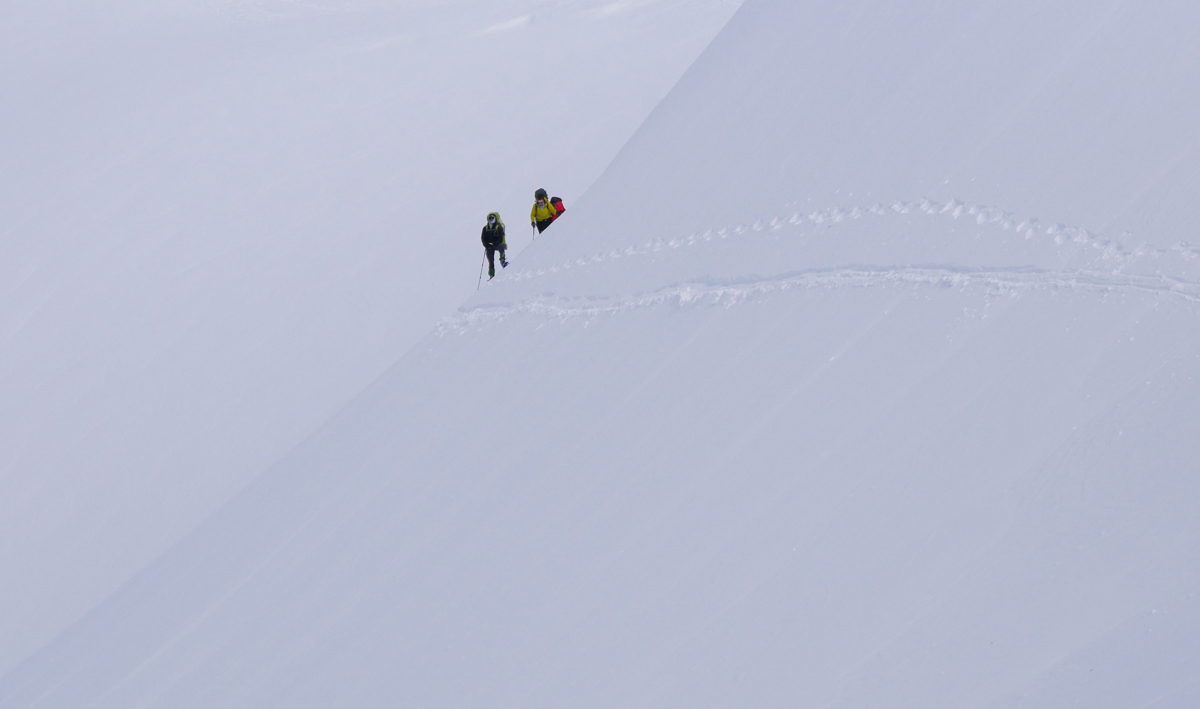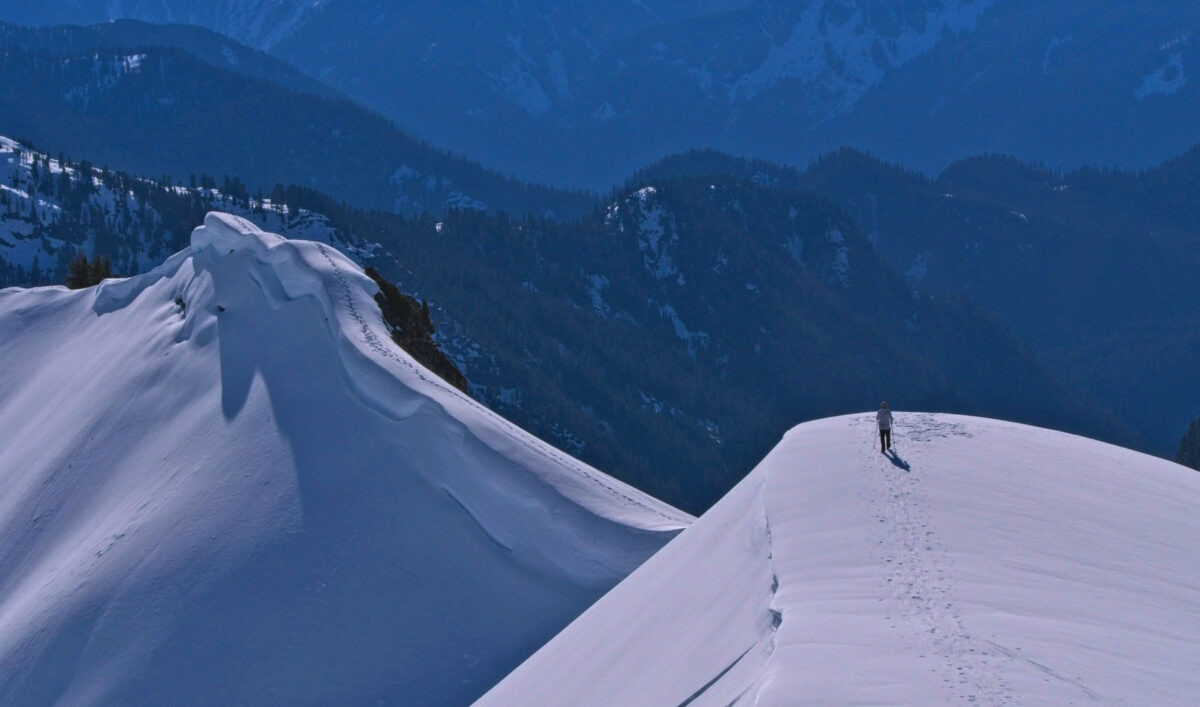Use the right snowshoes for the terrain.
There are snowshoes for flat terrain, rolling terrain, and mountain terrain. Most of our trips here in the Pacific Northwest are in Alpine terrain or terrain with steep slopes. For this, snowshoes designed for mountain terrain provide the greatest safety and comfort.
How are mountain terrain snowshoes different?
The main purposes of snowshoes are flotation and traction. They keep you from sinking into the snow or sliding off the slope. The deeper your feet sink, the more difficult it is to more. The more you can float on the snow the better.
Flat terrain snowshoes serve that purpose but provide little traction on the underside to prevent slipping and sliding on slopes. This lack of traction allows you to go faster on flat terrain but it also means flat terrain snowshoes can perform like a dangerous high-speed sled on mountain slopes. Foam running snowshoes are not appropriate for our routes in the Cascade Mountains.
Rolling terrain snowshoes have more traction, but only mountain terrain snowshoes have the level of added traction needed plus pop-up heel lifts that give your calves a break on steep terrain. There are some flat terrain snowshoes that have heel lifts, so check the amount of traction. Do not rely solely on whether the snowshoes have pop-up heel lifts.

